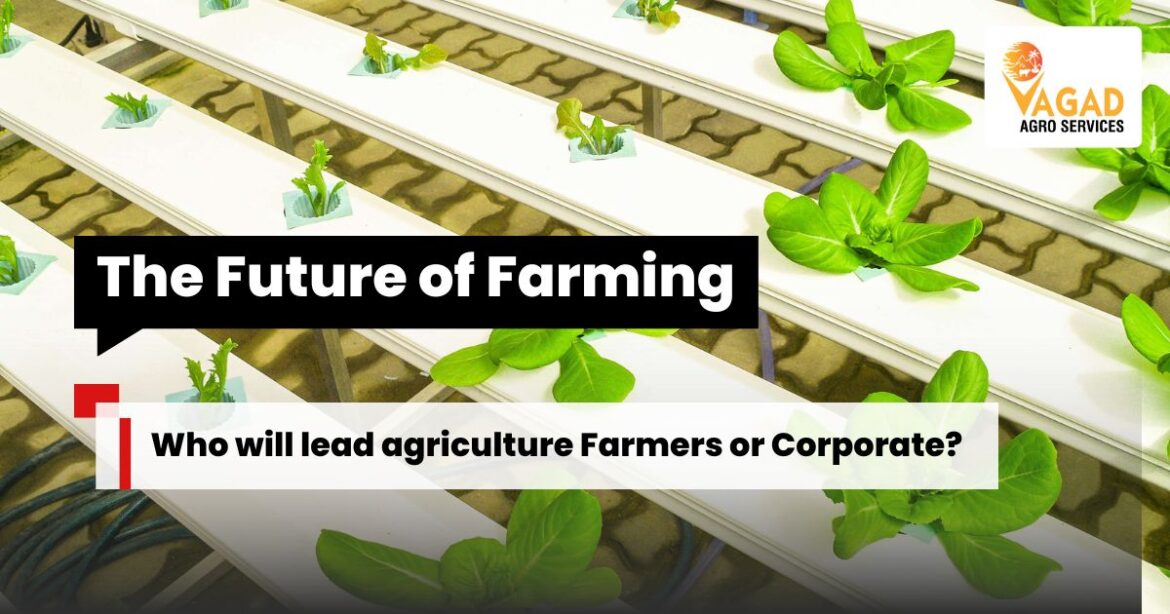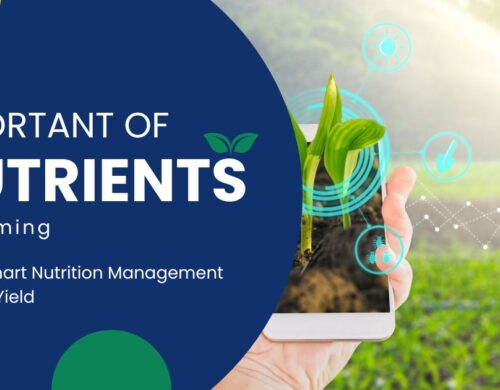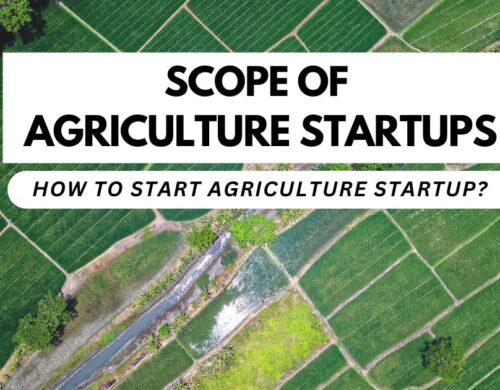
The future of farming is full of exciting possibilities and advancements. While the future of agriculture holds both challenges and opportunities, farming will remain a necessary and essential profession.
Striking a balance between farmers and corporate agriculture is crucial. A diverse agricultural sector that includes both small-scale farmers and corporate entities promotes healthy competition, encourages innovation, and offers different agricultural models. It is vital to ensure that the interests and well-being of farmers are protected, while also harnessing the potential of corporate agriculture to drive progress and address industry challenges. Cooperation, supportive policies, and sustainable practices can pave the way for a future where farmers and corporations work together to meet the growing demand for food, while prioritizing environmental sustainability and social responsibility.
Farmers will continue to play a vital role in the coming days, and agriculture as a business will continue to evolve. Here’s a look at the future of agriculture and its potential for growth as a business
Future of agriculture and its potential for growth
1. Ensuring Food Security
As the world population continues to grow, the demand for food will increase as well. Farmers will play a crucial role in meeting this demand by producing crops and raising livestock. So, the need for farmers will remain high to ensure that everyone has enough safe and healthy food to eat.
2. Embracing Technology
Agriculture is becoming more high-tech. Farmers are using new technologies like robots, artificial intelligence, and precision farming techniques to improve their productivity and efficiency. These tools help farmers streamline their work, save costs, and produce more food. By embracing technology, farmers can stay competitive and successful in their businesses.
3. Sustainable Farming Practices
People are becoming more concerned about the environment, and that includes how food is produced. Farmers are adopting sustainable practices that take care of the land, conserve water, reduce the use of chemicals, and protect biodiversity. By farming sustainably, farmers can meet the preferences of environmentally conscious consumers and find niche markets for their products.
4. Diversification and Value-Added Products
To thrive in the changing agricultural landscape, farmers are exploring new opportunities. They are diversifying their crops, trying out niche markets, growing organic produce, and even venturing into agritourism. By offering unique and high-value products, farmers can attract more customers, increase their profits, and stand out in the market.
5. Direct-to-Consumer Models
The internet has changed how we buy and sell things, and agriculture is no exception. Farmers can now sell their products directly to consumers through online platforms. This allows them to reach more customers, build relationships with them, and establish their brand. Farmers can also participate in community-supported agriculture (CSA) or farm-to-table initiatives, which connect them directly with consumers who want locally sourced produce.
6. Urban Agriculture
Farming is not just for rural areas. Urban farming is gaining popularity in cities through practices like rooftop gardens, vertical farming, and community gardens. This allows food to be grown right in urban areas, reducing transportation costs and supporting local food systems. Urban agriculture presents new opportunities for farmers to access urban markets and meet the demand for locally grown food.
7. Government Support and Investment
Governments and organizations understand the importance of agriculture and are providing support to farmers. They are creating policies that benefit agriculture, investing in research and development, improving infrastructure, providing financial support, and offering training programs. These initiatives help farmers overcome challenges and create a favorable environment for agricultural businesses to thrive.
Although there will be challenges like climate change, limited resources, and market fluctuations, the future of agriculture is promising. Farmers who adapt to consumer demands, embrace technology, practice sustainability, and explore new markets will not only survive but also thrive in their businesses. Agriculture will continue to be a vital industry, providing us with the food we need to live healthy lives.
The future of farming is likely to be a mix of traditional and innovative practices. Farmers will need to be adaptable and willing to adopt new technologies in order to meet the challenges of the future. Here are some key aspects that are likely to shape the future of agriculture:
Key aspects of the future of agriculture
1. Sustainable Farming Practices
Farmers are increasingly adopting sustainable methods that are kinder to the environment. This involves using precision techniques to farm more efficiently, using sensors and drones to monitor crops, and finding better ways to use water and fertilizers. By reducing the use of harmful chemicals, we can protect the planet while growing food.
2. Vertical Farming and Indoor Agriculture
As cities grow larger, there is a need for farming methods that don’t require a lot of land. Vertical farming and indoor agriculture are solutions to this problem. Instead of spreading crops out, they grow them in stacked layers or controlled environments indoors. This way, we can grow crops all year round, save space, and use less water.
3. Automation and Robotics
Robots are becoming important helpers on the farm. They can take care of tasks like planting seeds, harvesting crops, and checking on plant health. Artificial intelligence also plays a role, as smart systems analyze data from sensors, satellites, and drones to make informed decisions about farming methods. This helps farmers work more efficiently and make better choices.
4. Internet of Things (IoT) and Big Data
Farms are becoming smarter with the use of IoT devices and big data analytics. This means that farmers can gather a lot of information about their crops, soil, and weather conditions. By analyzing this data, they can make smarter decisions, allocate resources more effectively, and predict how their crops will grow. It’s like using a crystal ball to see into the future!
Information Technology will important role in Future Farming, read here more about Importance Of Information Technology in Agriculture
5. Genetic Engineering and Biotechnology
Scientists are discovering new ways to improve crops using genetic engineering and biotechnology. They can make changes to a plant’s DNA to make it more resistant to pests, diseases, and tough weather conditions. This helps farmers grow healthier, more productive crops that can withstand challenges and provide better food for us.
6. Farm-to-Table Traceability
People want to know where their food comes from and how it was produced. Technologies like blockchain are helping farmers provide this information. With blockchain, every step of the food supply chain can be tracked, from the farm to your table. This way, you can be sure that your food is safe, of good quality, and produced responsibly.
7. Climate Change Adaptation
Climate change is affecting farming in many ways. Farmers need to adapt to changing weather patterns, such as droughts and floods, and shifting growing seasons. This might mean using crops that can survive in harsh conditions, improving irrigation techniques, or finding new ways to protect plants from extreme weather. By being resilient, farmers can continue to grow food even when faced with climate challenges.
8. Urban Farming and Community Gardens
Even in cities, people are finding ways to grow food. Urban farming and community gardens are becoming popular. These initiatives allow people to grow their own vegetables and fruits in small spaces. It’s a great way to have fresh, local food and bring communities together around farming.
In summary, the future of farming will focus on sustainable practices, new technologies, using data to make better decisions, and meeting the increasing demand for food while taking care of our planet. Farmers will find innovative ways to grow food efficiently, adapt to climate change, and connect with consumers who want to know more about where their food comes from.
In the future of agriculture, both farmers and corporations will have important roles to play. Let’s take a closer look at their contributions:
- Farmers: Farmers have always been the heart of agriculture. They possess valuable knowledge, experience, and a deep understanding of the land and farming practices. Many farmers have strong connections to their communities and prioritize sustainable and traditional farming methods. They often operate as small or family-owned businesses, making significant contributions to local economies. Farmers will continue to be essential in food production, particularly in small-scale and specialized farming sectors.
- Corporate Agriculture: Corporations, including large agricultural companies, will also have a significant impact on the future of agriculture. These corporations often have access to substantial resources, advanced technologies, and extensive distribution networks. They can drive innovation, research and development, and large-scale production. Areas of focus for corporate agriculture may include genetically modified crops, precision farming, and mechanization. Additionally, they can contribute to the global supply chain and international trade of agricultural products.
In some cases, farmers may continue to work independently and maintain their autonomy. In other cases, they may choose to collaborate with corporations through contract farming or other agreements. Such collaborations can provide farmers with access to resources, markets, and technological advancements.
Kalpesh Pathak
Related Posts

Important of Nutrients in Farming, Smart Nutrition Management for High Yield
Nutrients are really important for farming because they help plants grow and stay healthy. Different nutrients are needed by plants for...

Scope of Agriculture Startups, How to Start Agriculture Startup?
The scope of agricultural startups is vast and growing. There are many areas where technology can be used to improve the efficiency,...
